OUTSTANDING. Another great history lesson and a very spectacular outcome.
Jan
Jan
 |
As a way to introduce our brass coins to the community, we will raffle off a free coin during the month of August. Follow link ABOVE for instructions for entering. |
 |

Thank you my dear friend. If all goes to plan, I might actually be able to finish her tomorrow. The wood obviously has to receive a "final" coating of Tung Oil (even though it is never really final as I will explain) , but barring that, a finish is on the cards.OUTSTANDING. Another great history lesson and a very spectacular outcome.
Jan

Jan to be very honest - I actually do not know. I will continue work on the Haarlem for the time being. The next sampan will have to be a complete scratch build and for that I need the help of someone versed in CAD who can convert the drawings into actual plans. So, definitely the Haarlem for now.Excellent, you must be pleased with your work. Is the Haarlem next or will it be another sampan?
Jan
Your deep interest and commitment with your approach to this Sampan comes across the waves in your descriptive commentary which carries us along with you in this voyage of discovery. Thanks for the time that you make for us. RichJan to be very honest - I actually do not know. I will continue work on the Haarlem for the time being. The next sampan will have to be a complete scratch build and for that I need the help of someone versed in CAD who can convert the drawings into actual plans. So, definitely the Haarlem for now.


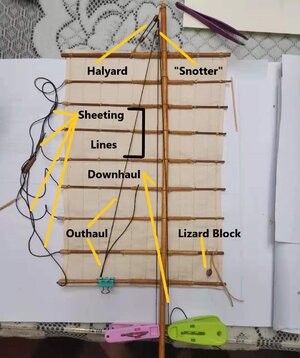

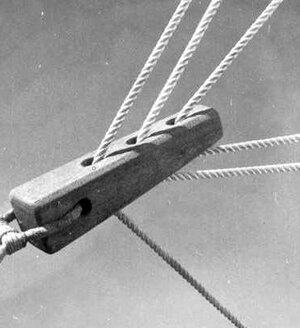
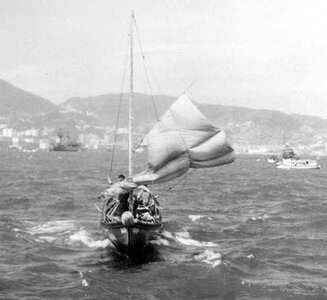
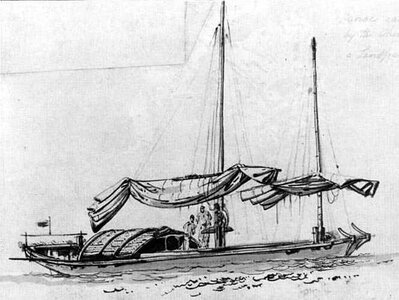
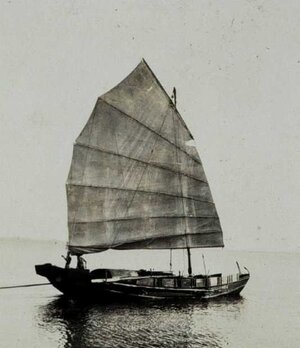
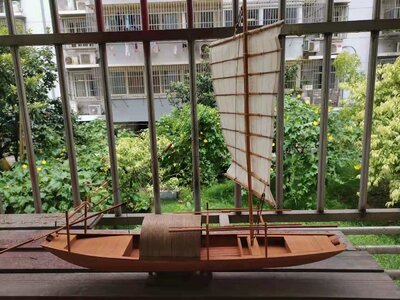
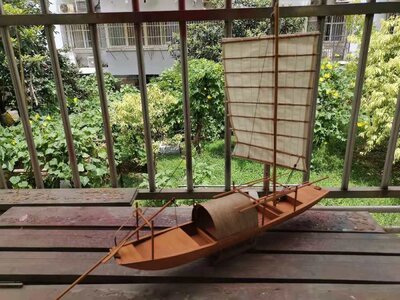
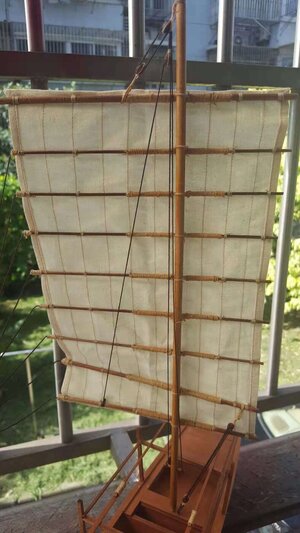
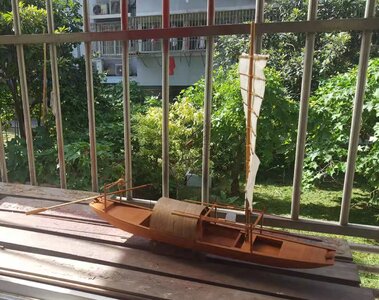
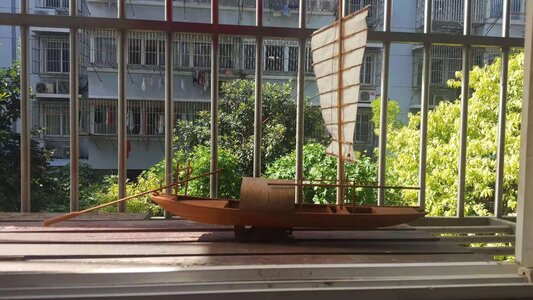
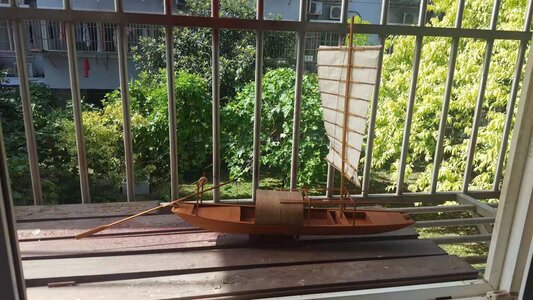

Very well done. If only all other ships rigging were as user friendly…lol. But she’s a beautiful little boat. I enjoyed the history and the build.Onwards with the rigging.
View attachment 248078
Let us learn some Junk Rig terminology.
This excerpt is taken from an excellent article on the Junk Rig by http://kastenmarine.com/junk_rig.htm
A minor advantage of familiarity with the junk rig is being able to impress dock side wags by knowing all about lizards, sheetlets, euphroes, snotters, and the like....!
The sail shape is controlled by each of the individual sheets. Each "sheetlet" runs through a "euphroe" which acts as friction block to keep the tension set as intended.
View attachment 248079
A nice picture of the Euphroe.
Once the sail is raised, if it is desired to tension the sail vertically, it is hauled downward by a "downhaul" or "bowsing tackle." If it is desired to move the sail forward or aft, it can be done by controlling the "out haul" which in this case leads forward to the leading edge of the battens. The top yard can be controlled via a line called the "snotter" to move the spar forward or aft, or to snug it against the mast, as needed.
View attachment 248087
A reefed sampan in Hong Kong harbour.
View attachment 248088
Almost never seen in books -- one of the earliest drawings of a large sampan, by John Webber, who sailed with Captain Cook. Although two-masted, longer, and lower it still has the same general profile as the small sampans. Drawings and photos from 100 to 150 years later show that these boats changed almost not at all.
Compare Webber's drawing to this large sampan photographed in the Philippines by someone from the US Coast Survey, early 1900s.
View attachment 248089
Philippine Sampan
And now with all of that done it is simply a case of picking up the whole sail assembly and mounting the mast in the sampan. This the easiest thing to do you can imagine. Then the lizard block needs to be attached to the block which has previously been mounted next to the mast and the two Euphroe lines need to be connected to the block which has previously been mounted at the stern right next to the Yuloh. And with that done - almost half unexpectedly - the fat lady had sung.
View attachment 248091
View attachment 248092
View attachment 248093
This picture clearly shows how the lizard block is attached to the block right next to the mast via another lanyard.
View attachment 248094
View attachment 248095
View attachment 248096
In due course I will get a professional photographer to take some proper pictures, but with the Covid situation the way it is at the moment, no one knows when that will be. Neither do I know when she will find her final resting place in Shatian in Guangdong.
What I do know though, is that this sampan has changed the way I look at modelbuilding. Never before have I had so much enjoyment in my building - to such an extent that instead of today being a happy day upon its conclusion, I feel actually quite sad. Never again will I build a model just to build a model. Unless it has a specific meaning or significance to me (the Dutch uses the word "binding"), it will stay on the shelf.
As to the future of the Tanka people and what it holds for them - no one knows. But in my own, miniscule way, I have at least introduced 24 wonderful SOS members to the plight of the Tanka. For that opportunity, I thank SOS and I thank you all for your wonderful support.
Until next time, keep well my friends!
Heinrich

What I do know though, is that this sampan has changed the way I look at modelbuilding. Never before have I had so much enjoyment in my building - to such an extent that instead of today being a happy day upon its conclusion, I feel actually quite sad. Never again will I build a model just to build a model. Unless it has a specific meaning or significance to me (the Dutch uses the word "binding"), it will stay on the shelf.



 You know, I am not often speechless - but now I am. That is an incredibly precious message and one that I will cherish for as long as I live. You are so right - this has been an incredible log, but not because of me - but because of all my wonderful friends who have supported me so much! If God grant me the time, I may build many more models, but none will hold the place in my heart that this one will. Thank you my friend!
You know, I am not often speechless - but now I am. That is an incredibly precious message and one that I will cherish for as long as I live. You are so right - this has been an incredible log, but not because of me - but because of all my wonderful friends who have supported me so much! If God grant me the time, I may build many more models, but none will hold the place in my heart that this one will. Thank you my friend!